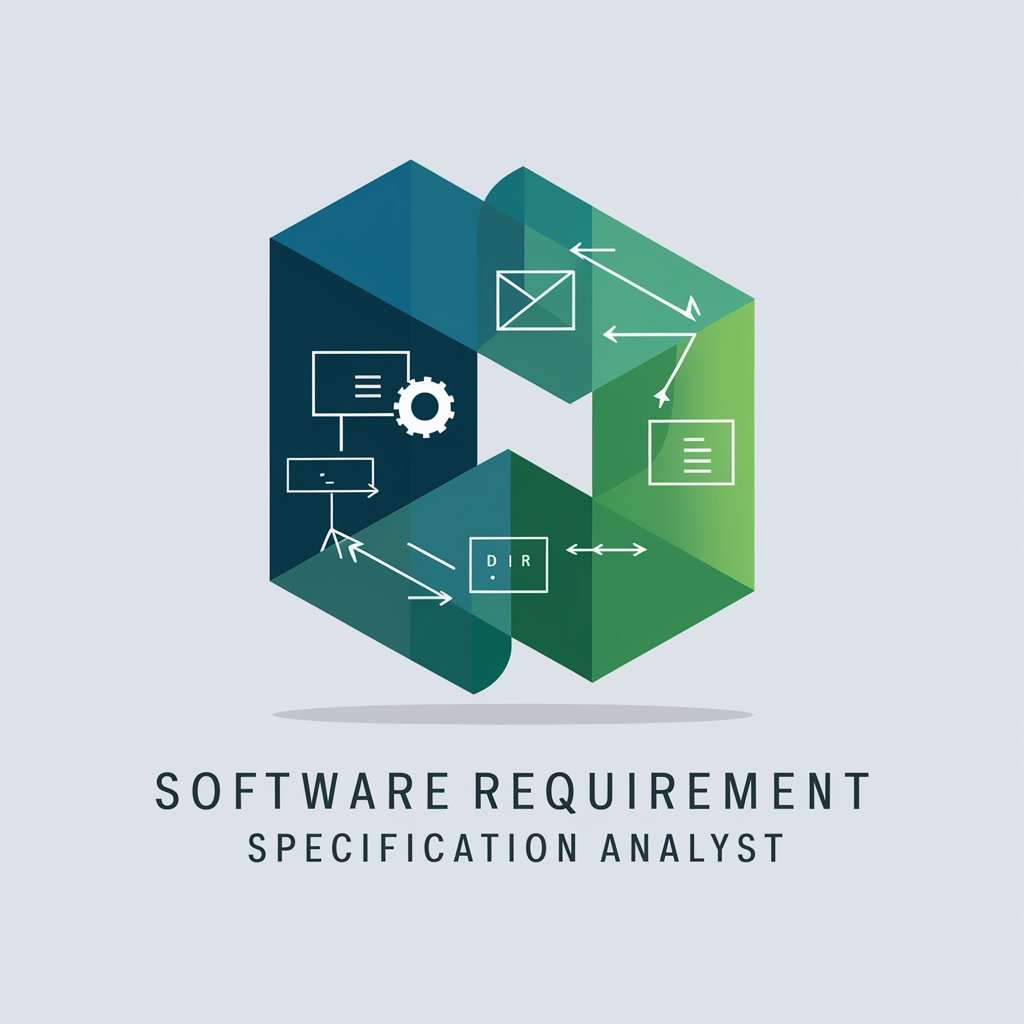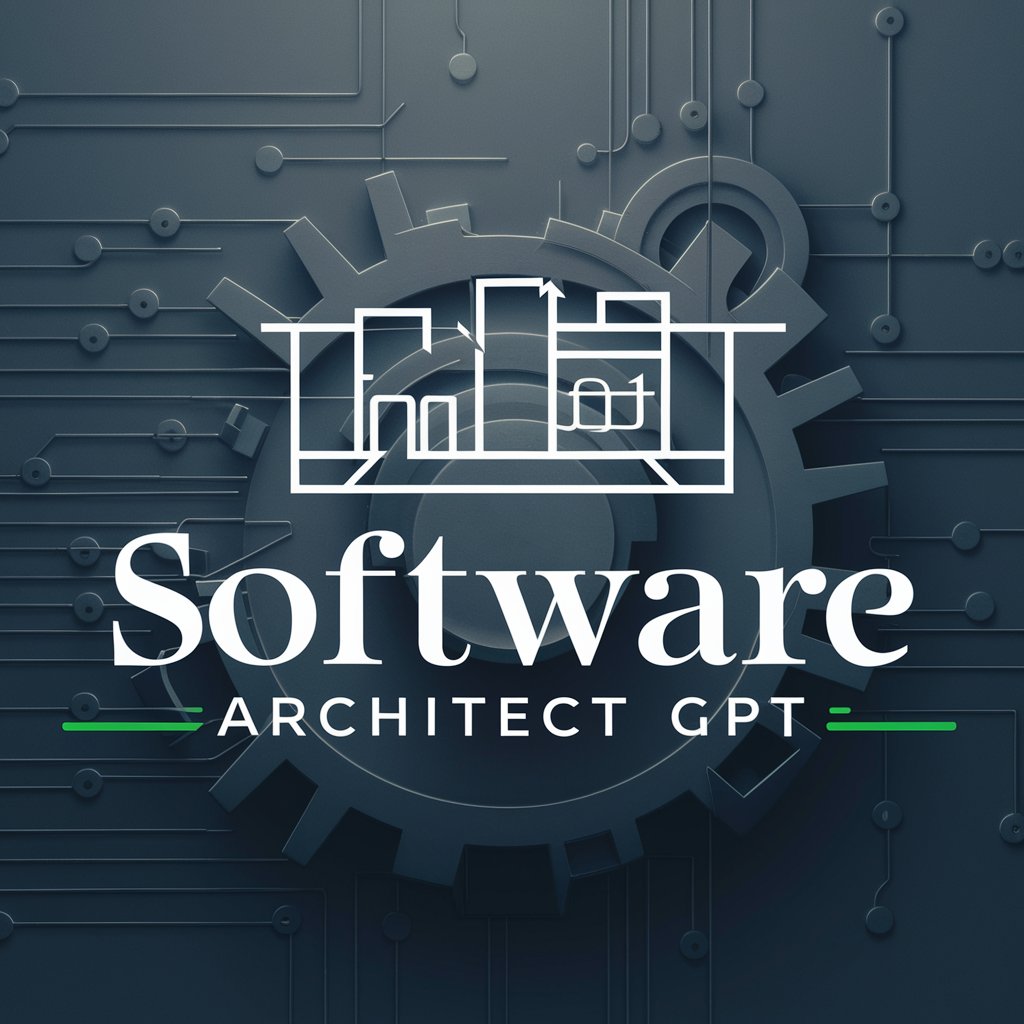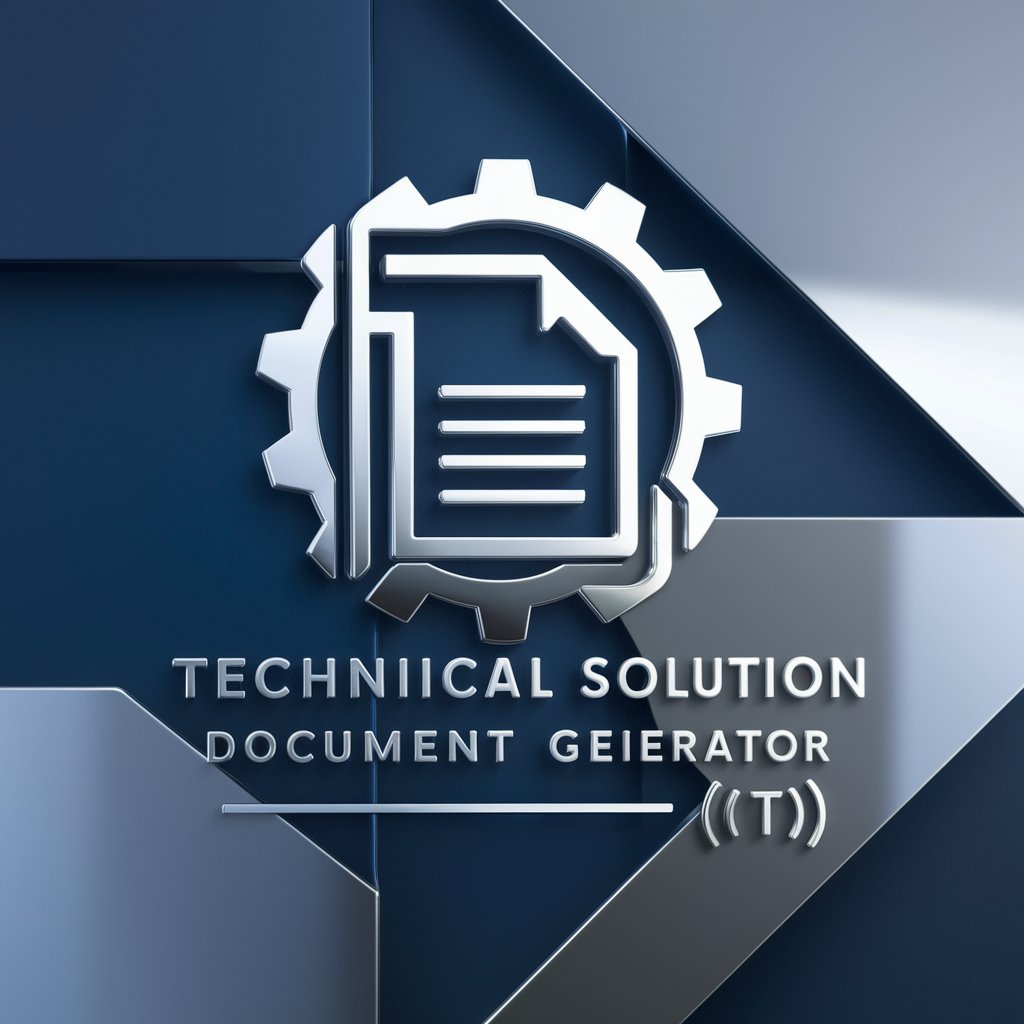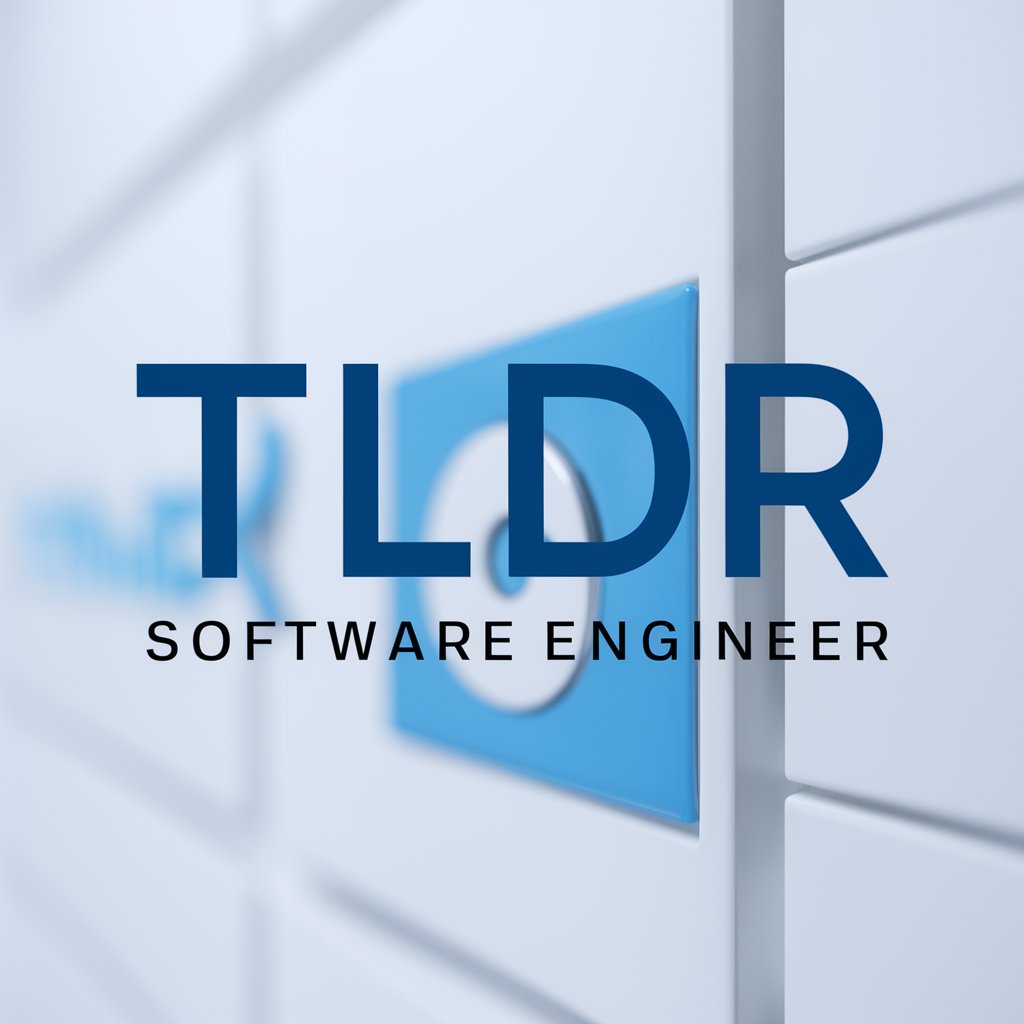
Software Requirement Specification Analyst-SRS Tool for Efficient Documentation
AI-powered tool for creating detailed software specifications.

Refining business ideas and processes to prepare them for automation or software development.
I have an idea for a business application and need to describe it in more detail.
I want to structure my ideas for an automated business process.
Get Embed Code
Introduction toSoftware Requirement Analyst Software Requirement Specification Analyst
A Software Requirement Specification (SRS) Analyst is a professional responsible for analyzing, gathering, and defining the requirements of software systems. This role focuses on transforming business needs into clear, actionable, and detailed specifications that developers and stakeholders can use throughout the development lifecycle. The primary purpose is to ensure that the software solution addresses the needs of the business while maintaining clarity, consistency, and technical feasibility. An SRS Analyst works closely with stakeholders, such as business owners, product managers, and developers, to ensure all aspects of the system are properly documented. The analyst’s work creates the foundation for development teams to build and implement software solutions accurately. For example, if a company wants to develop an online banking system, the SRS Analyst would help define the system’s functionality: user registration, transactions, account management, security measures, and any legal requirements. They would define how the system should work from both the technical and business perspectives. This detailed documentation ensures alignment between theSoftware Requirement Analyst business goals and the technology being implemented, avoiding miscommunication and costly errors during development.
Main Functions of a Software Requirement Specification Analyst
Requirements Gathering and Analysis
Example
A company needs a mobile application for tracking employee attendance. The SRS Analyst would work with HR and IT teams to identify the business goals (e.g., track attendance, allow mobile clock-in/out), system constraints (e.g., data security, mobile OS support), and detailed functional requirements (e.g., real-time notifications, reporting features).
Scenario
During a discovery phase, the SRS Analyst schedules interviews with various stakeholders and conducts workshops to understand the business requirements. They document everything in detail, using templates like use cases and user stories to ensure that all necessary features are captured before the design phase begins.
Defining Functional and Non-Functional Requirements
Example
For a ride-sharing app, the functional requirements might include driver registration, trip booking, payment processing, and ratings. Non-functional requirements could involve performance standards such as system response time, uptime, and scalability (handling high traffic).
Scenario
The SRS Analyst works through detailed scenarios to define expected behavior (e.g., a rider can book a ride in under 2 minutes), system performance requirements (e.g., app response time must be under 3 seconds), and security measures (e.g., encryption for payment data). This ensures all critical aspects are captured in the SRS.
Creating and Maintaining Documentation
Example
The SRS Analyst prepares a comprehensive Software Requirement Specification document that includes all identified requirements, constraints, assumptions, and dependencies for a new CRM (Customer Relationship Management) system.
Scenario
After gathering all the requirements, the SRS Analyst compiles them into a structured document. This document includes sections for both functional and non-functional requirements, system architecture, user interface design considerations, and integration points with other systems. This document is continuously updated to reflect any changes or refinements throughout the software lifecycle.
Validating and Verifying Requirements
Example
In the case of an e-commerce platform, the SRS Analyst ensures that all user-facing features like shopping cart, payment gateway, and order tracking are verified against the business goals of providing an intuitive shopping experience and secure transactions.
Scenario
The SRS Analyst conducts reviews and walk-throughs with stakeholders (including users and developers) to verify that the requirements align with expectations. They also ensure the feasibility of the requirements, checking for potential conflicts or gaps in the business logic.
Collaborating with Development and Testing Teams
Example
When developing an inventory management system, the SRS Analyst works closely with developers to ensure that the system’s functionalities, such as barcode scanning and real-time stock updates, are implemented correctly and meet the requirements.
Scenario
The SRS Analyst regularly communicates with developers to clarify any ambiguities or uncertainties in the requirements. They also assist the QA team in creating test cases by providing them with a clear understanding of what the system is supposed to do, ensuring proper test coverage and validation.
Ideal Users of Software Requirement Specification Analyst Services
Business Analysts and Product Managers
These professionals often lead the charge in determining what a product or system should do. They collaborate with stakeholders to understand business needs, but they may not have the technical expertise to translate those needs into specific software specifications. An SRS Analyst provides detailed and structured documentation that ensures both business and technical requirements are aligned, reducing the risk of scope creep or miscommunication. They benefit from an SRS Analyst by receiving a clear set of requirements that serve as a foundation for development.
Software Development and Engineering Teams
Developers and engineers are tasked with translating business requirements into code. However, if the requirements are unclear or incomplete, it can lead to rework, bugs, and delays. An SRS Analyst provides clear, precise, and organized documentation, ensuring developers understand the system’s intended behavior and technical constraints. By using an SRS Analyst's services, engineering teams save time on clarification, reduce the risk of errors, and ensure alignment with business objectives.
QA and Testing Teams
Quality Assurance teams need well-defined criteria to validate whether the software meets business goals and user expectations. The SRS Analyst documents the expected behavior, use cases, and success/failure criteria for the system. This helps QA teams develop comprehensive test cases and automate the testing process. By utilizing an SRS Analyst’s services, QA teams can ensure that the system functions as expected and meets both functional and non-functional requirements.
Project Managers and Stakeholders
Project managers and other stakeholders, such as clients or end-users, need clear documentation that outlines what the project will deliver. The SRS Analyst’s work provides a single point of truth for the system requirements, helping manage stakeholder expectations and ensuring that scope, cost, and schedule are aligned. They benefit by having a clear reference that helps reduce project risks, as well as a tool for managing changes or revisions throughout the development lifecycle.
Regulatory and Compliance Teams
In highly regulated industries (e.g., healthcare, finance, or government), compliance teams require clear documentation to ensure that software systems meet legal and regulatory requirements. The SRS Analyst documents both functional and non-functional requirements with a focus on ensuring compliance with laws such as GDPR, HIPAA, or SOX. These teams benefit from the precise and detailed documentation provided by the SRS Analyst to verify compliance before and during development.
How to Use Software Requirement SpecificationSoftware Requirement Specification Guide Analyst
Visit aichatonline.org for a free trial without login.
To get started with the Software Requirement Specification (SRS) Analyst, visit aichatonline.org. There's no need to log in or purchase ChatGPT Plus for access. This provides you with a chance to try the tool free of charge, offering an easy and quick introduction.
Define your software application or business process.
Describe your software application or business process in detail. The more specific and clear you are, the better insights the system can provide. Focus on the key aspects, such as objectives, user interactions, and critical workflows.
Identify the entities involved in your system.
Using the tool, begin by listing the main entities in your system (e.g., users, products, orders). The software will guide you through the process of determining relevant attributes and relationships for each entity.
How to use SRS AnalystDefine business rules and dependencies.
With the entities identified, use the tool to establish the business rules governing those entities. This includes validation rules, inter-entity dependencies, and trigger events that affect system behavior.
Generate the Software Requirement Specification (SRS) document.
Once all entities, rules, and workflows have been defined, the tool helps you generate a detailed Software Requirement Specification document that outlines the architecture, rules, and functional requirements for your system.
Try other advanced and practical GPTs
Immersive Roleplay
AI-powered storytelling for dynamic roleplay

Video AI by VEED
AI-generated videos from your ideas

Car Assistant (Car expert, Mechanic, Auto Mate)
AI-Powered Car Advice for Every Driver

文生图
Generate stunning visuals with AI power

宇宙最强ENTP
AI-powered academic writing in two languages

Academic writing aid
AI-driven support for academic writing.

NetSuite Assistant
AI-powered solutions for NetSuite users

官能朗読助手
AI-crafted sensual stories for voice

Zoho Expert
AI-powered support for smarter Zoho use

Asistente De Planificación Escolar
AI-powered assistant for smarter school planning

职业规划师
AI-powered career clarity and growth planning

Interior Designer - design your home
AI-powered room makeovers in seconds

- Process Mapping
- Software Development
- Business Analysis
- Project Documentation
- Requirements Gathering
Frequently Asked Questions about Software Requirement Specification Analyst
What is a Software Requirement Specification Analyst?
A Software Requirement Specification Analyst helps you gather, structure, and define all aspects of your software application or business process. It identifies key entities, their relationships, and business rules, ultimately helping to generate an SRS document that serves as the foundation for software development.
Can I use the Software Requirement Specification Analyst for non-technical applications?
Yes, the Software Requirement Specification Analyst can be applied to both technical and non-technical domains. It's versatile and helps in any scenario where defining processes, entities, or rules is essential, such as business operations, project management, or educational tools.
Do I need programming knowledge to use this tool effectively?
No, the Software Requirement Specification Analyst is designed for both technical and non-technical users. It simplifies the process of capturing business needs and translating them into structured documentation without requiring programming skills.
How does the tool help with system dependencies?
The tool helps identify and map out dependencies between entities within the system. It automatically suggests potential relationships based on the entities you define and lets you specify the rules and conditions that trigger changes in the system.
Can I integrate the generated SRS into my development workflow?
Yes, the generated Software Requirement Specification can be directly integrated into your development process. It can serve as a detailed blueprint for developers and a communication tool for project stakeholders, ensuring alignment across teams.






